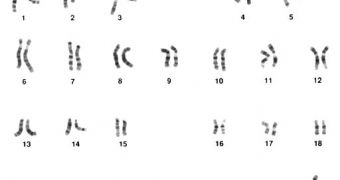An international collaboration of researchers has recently managed to make substantial headway in their study of the human genome. The investigators were able to gain new, thorough insight into the functional organization and arrangement of the human genetic material, and the data they collected is presented in a paper accompanying the findings. The work was published today, in the March 26 issue of the open-access scientific journal PLoS ONE, a magazine of the Public Library of Science, PhysOrg reports.
For the investigation, German researchers from the University of Regensburg, and the Ludwig Maximilians University, collaborated with Spanish colleagues from the Centro de Investigacion Principe Felipe. The team says that it has conducted research in one of the most widely studied fields of genetics of the post-genomic era. This means that they looked at how the genetic material was organized inside the nucleus of various cell types, in an investigation meant to assess precisely how the DNA accessed regulatory factors. The dynamics and regulating factors involved in this process were the main target of study, the group adds.
One of the reasons why the researchers decided to conduct this investigation was because a very small number of discrete genomic loci had been analyzed from a spatial point of view. That is to say, while many geneticists have suggested that the distribution of material inside the cellular nucleus is not random, there have been very few studies to actually look at the ways in which genetic material is distributed around the structures. Scientists say that there is a great difference between knowing that the arrangement of the genome is non-random, and seeing the actual patterns of organization.
For the new study, the investigators used a variety of observation techniques, including sequencing, microarray analysis, and the single-cell analysis of the largest sub-compartment of a nucleus, the nucleolus. They looked at the network DNA molecules formed inside, in a scientific effort that was led by experts Attila Nemeth and Gernot Langst. The end-result of the work was obtaining a high-resolution, 3D map of the way thousands of genes and non-coding sequences of molecules were distributed within the three-dimensional confines of the nucleolus. “The results help us understand how nuclear information is packaged into functional compartments of the nucleus,” the researchers write in the journal entry.

 14 DAY TRIAL //
14 DAY TRIAL //